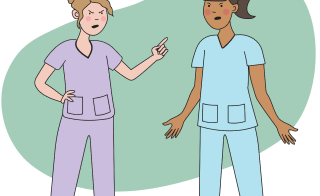Burnout happens when stress builds up over time, leaving the body and mind feeling exhausted and worn out. It can make people feel drained, unmotivated and hopeless.
Burnout isn’t caused by one single thing — it’s often a mix of workplace and personal factors. In the workplace, it can stem from high workloads, emotional demands or a lack of support.
Burnout and stress are related but not the same. Stress tends to come and go, while burnout is ongoing emotional exhaustion or feeling overwhelmed to the point of extreme fatigue. When workplace stress becomes chronic or prolonged, it can lead to burnout.









